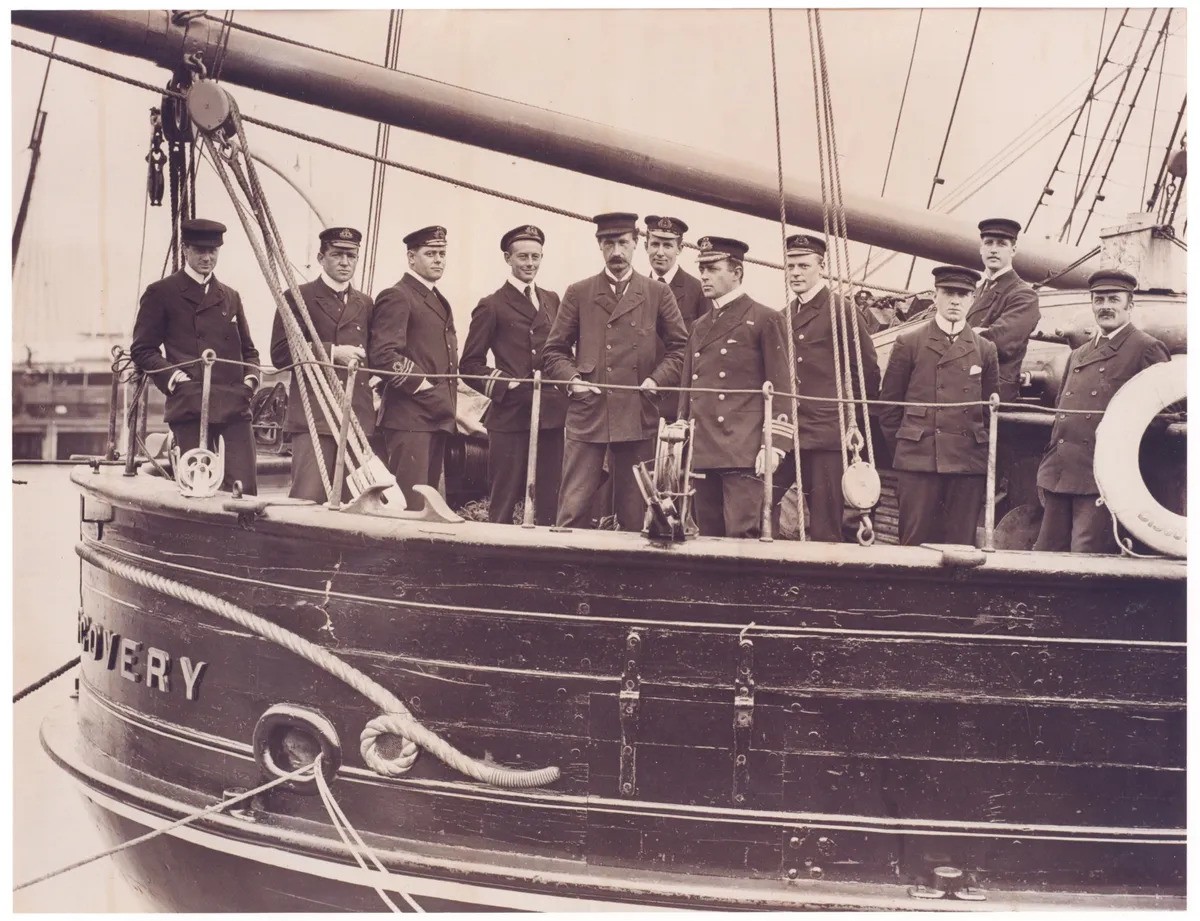In 1901, RRS Discovery helped launch the “Heroic Age of Antarctic Exploration” when it took exploration luminaries like Robert Falcon Scott (who led the expedition) and Ernest Shackleton on their first trip into the ice-packed waters of the distant south. Now, 123 years later, researchers have created a “digital twin” of the pioneering vessel that offers new insights into the lives of Antarctic explorers.
A first of its kind
The Royal Research Ship (RRS) Discovery was built in Dundee, Scotland. It was the first ship in the world to be specifically designed to carry out scientific research in the harsh Antarctic environment and provided its crew with an ideal home while they carried out the first official British expedition to the region since 1839.
This famous voyage also represented the starting point for some of the most influential figures in the history of Antarctic exploration, including the careers of Robert Falcon Scott (who led the expedition), Ernest Shackleton, Edward Wilson, Frank Wild, Tom Crean, and William Lashly.
During the expedition, the team carried out scientific and geographical research into what was essentially an untouched and unknown continent. Its success was not only a landmark in the history of British Antarctic exploration, but also inspired subsequent voyages in the Heroic Age of Antarctic Exploration, in the years between the end of the 19th century and the Shackleton–Rowett Expedition of 1921–1922.

In 1901, RRS Discovery and her crew set sail on the first official British expedition to the Antarctic since James Clark Ross’s journey in 1839.
Image credit: Dundee Heritage Trust
The exploration’s discoveries included the Cape Crozier emperor penguin colony and many marine species, snow-free dry valleys in the western mountains, the Antarctic plateau – where the South Pole is located – and evidence that the Ice Barrier was a floating ice shelf.
After this voyage, RRS Discovery had subsequent Antarctic expeditions in 1925 and 1929, but then became a training ship based in London in the years between 1931 and 1979. Then, in 1986, it returned to Dundee where it has become a multi-award-winning visitor attraction operated by Dundee Heritage Trust. Every year, the old Antarctic explorer attracts over 80,000 visitors who want to know more about its career.
The “digital twin” comes to life
Using state-of-the-art technology, a team led by researchers at the University of Southampton have now created a highly accurate 3D representation of RRS Discovery. The new “digital twin” provides new insights into how the ship was built and used while also informing ongoing restoration work on the original vessel.
“This digital twin provides an amazing opportunity for more people to explore this fascinating ship and learn about its history in a completely new way – including areas of the ship that cannot be accessed by the public,” Dr Michael Grant, from Coastal and Offshore Archaeological Research Services at the University of Southampton, explained in a statement.
“Through this we can obtain even greater insights into the lives of the people who explored the Antarctic over a century ago, providing the foundation for much of the ocean and climate science being undertaken today.”
The team created the representation by making digital recordings of the vessel using unmanned aerial vehicles (UAVs) and laser scanners. The latter enabled the team to capture the ship’s precise shape, dimensions, and details. This was supplemented with LiDAR – a technique for remote sensing that uses light in the form of a pulsed laser – and photogrammetry surveys, which created the highly accurate 3D representation of the whole ship, including its interior and exterior.
“With the rise of new technologies, such as laser scanners and UAVs”, Dr Felix Pedrotti, from the Southampton Marine and Maritime Institute at the University of Southampton, explained, “we can now create highly accurate digital twins. These digital replicas offer invaluable insights into the RRS Discovery, including its structures and layouts.”
The production of the digital representation coincides with a major centenary celebration for the ship. In 2023, RRS Discovery celebrated 100 years since she was purchased by the British Government and started to be refit for the Discovery Oceanographic Expeditions as the first ever Royal Research Ship.
In 2025, it will be the centenary of this expedition, which lasted until 1927 and offered valuable scientific insights, including a greater understanding of whaling and the ecosystem of the great whales, which started conservation thinking.
“This digital model marks the beginning of an exciting project to bring together the stories of the RRS Discovery, which will ensure all the artefacts and findings of those early expeditions are available to all, enhancing our understanding of the work undertaken by the ship then and how this research continues today”, Dr Tammy Horton, Senior Research Scientist and manager of the Discovery Collections at the National Oceanography Centre, Southampton, concluded.
Source Link: Explore Scott And Shackleton's Famous Antarctic Ship With Incredible "Digital Twin"